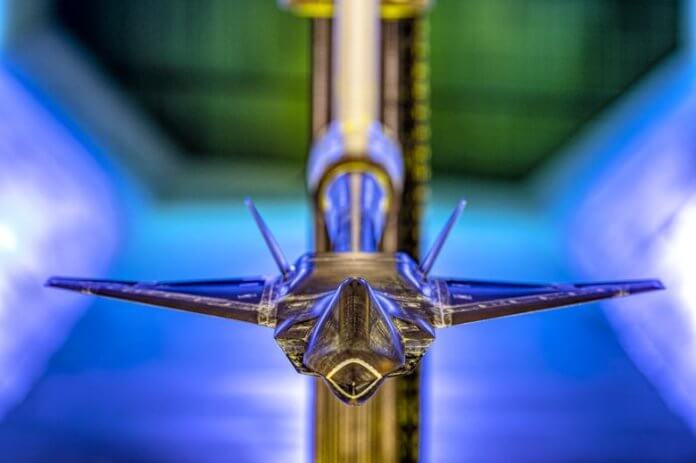
There are a number of prospective ‘Next Generation’ fighter projects taking shape around the world, although not all will be truly revolutionary.
A new generation of fighters is starting to take shape, influenced by the so-called fifth generation fighters of the United States – the Lockheed Martin F-22 Raptor and F-35 Lightning II. These were the fighters that brought ‘low observability’ (LO) into the mainstream, with radar stealth having hitherto been the domain of highly specialised strike/attack aircraft. But they were also much more than stealthy fighters, incorporating advanced avionics, a high degree of sensor fusion, and unmatched performance and agility.
Until it became clear that the F-35 did not have it, Lockheed used the ability to supercruise as a defining characteristic of the fifth generation, along with super-manoeuvrability. But checklists of particular capabilities of performance characteristics are not all that helpful in determining what defines a cutting-edge modern fighter. Instead, we should perhaps look at the degree to which an aircraft can actually survive and achieve its mission objectives in a representative, modern, highly-contested peer-on-peer environment.
New sensor technologies have, in any case, reduced the importance of low observability. Modern infrared search and track systems provide a passive means of detecting, tracking and even engaging airborne targets at very long range, while new radar technologies may work in bands that render ‘stealthy’ targets easier to see, or may use bistatic technology. Some radars may even be able to detect the disturbed plume of air left behind a stealthy aircraft.
Avoiding detection by enemy radar is just one way of surviving in the face of heavy enemy defences. The US has already moved away from its original plan to field an all-Stealthy frontline force, and will instead aim to blind an enemy, using LO aircraft to disrupt enemy defences, with jamming platforms, Suppression of Enemy Air Defences (SEAD) aircraft and other assets. One RAF officer summarised the US approach as being one in which it effectively says: “I will blind you completely, so that I can come and do what I say I’m going to do. That is the behaviour of a superpower. What you’re saying is, we’re coming in, and you’re not even going to really know where we are coming in, and you’re not going to know what’s coming, but you’re going to be completely decimated, and blinded through the whole process.”
But many believe that level of dominance is not required, and that with judicious use of electronic attack, an enemy ‘might know that you are coming, but won’t be able to do anything to stop you, and you’re going to bomb him anyway.’ If an air force wants to have the right mix of combat air capabilities and the right balance between capability and value for money and flexibility, a mix of 4th and 5th generation fighters is probably ideal, but does rely on the aircraft having the right sensors, weapons and capabilities. This is not simply a matter of cost, since the two types of fighter can be mutually enhancing when working together.
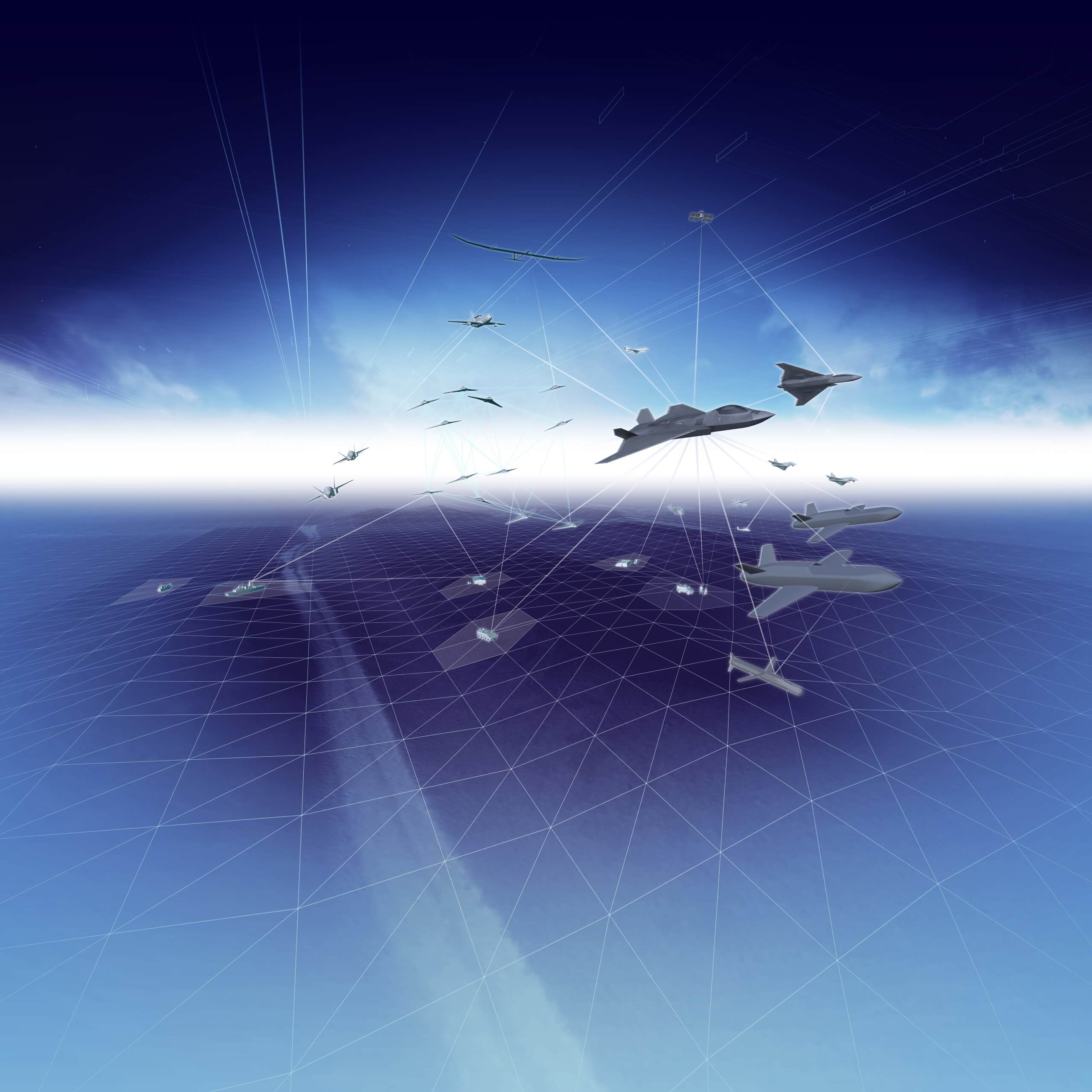
Brute and Assassin
One senior RAF officer likened the combination of the upgraded Typhoon (with the new ECRS.Mk 2 radar) and the F-35 to “the mix of the brute squad and the assassin. So they know we’re there, but we are also a very survivable platform, we can defend ourselves, we don’t have to worry about our signature and we are carrying vast numbers of weapons so we become a flying magazine. While that fifth generation silent assassin is sliding around the background, you’ve got a fourth generation platform raining down electronic attack and the world’s supply of Select Precision Effects At Range Capability (SPEAR CAP III) missiles or Small Diameter Bombs (SDB) or whatever weapon you want to use, saturating the defences and providing a massive distraction from the fifth generation platform that’s sliding the knife in.”
And survival in the most contested environments is not only dependent upon the characteristics and capabilities of an individual aircraft platform. Increasingly, manned combat aircraft will form just one element within a wider combat air system, and will be augmented by a range of support assets, effectors, unmanned ‘loyal wingman’ or remote weapons carriers and swarms of attritable and expendable unmanned aerial systems (UAS). With this in mind, connectivity and the ability to manage and transfer data becomes more important than simple radar signature in what makes a modern fighter.
For these reasons, most of the fighters now under development are not planned to have the same degree of all-aspect Stealth that the F-22 enjoys today. Instead they take a more balanced approach to low observability,
Perhaps unsurprisingly, the US has been exploring new generation fighter technologies for some years, under a variety of programme names, including Penetrating Counter Air and Next-Generation Air Dominance (NGAD) for the US Air Force, and F/A-XX for the US Navy. The two services have moved away from a common programme and a common platform, but both envisage their next generation fighter being a highly-connected air warfare ‘system of systems’ that will include a manned fighter aircraft, UAS and other networked platforms. These could incorporate new levels of aerodynamic performance, hypersonic weapons, and even high-energy directed (laser)-based weapons. Little information has leaked into the public domain, though it has been claimed that the US Air Force has already built and flown a full-scale demonstrator for its future NGAD fighter.
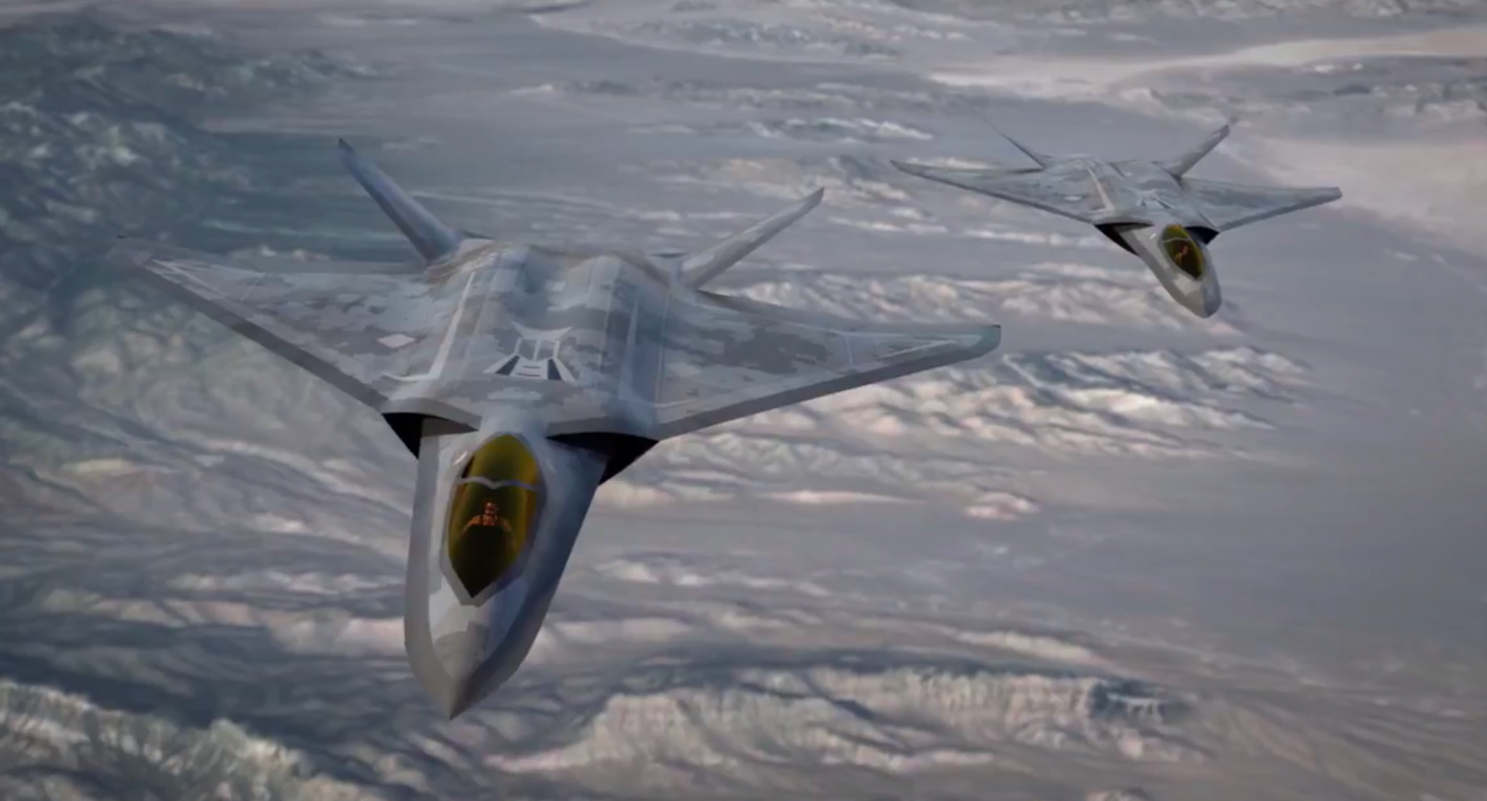
This could be the product of a 2014 Defense Advanced Research Projects Agency (DARPA) Air Dominance Initiative study and the little-known Aerospace Innovation Initiative (AII) that followed in fiscal year 2015. This was explicitly intended to: “develop and fly two X-plane prototypes that demonstrate advanced technologies for future aircraft.” The AII set up competing teams for the production of these two prototypes, one of which was to be focused on future Air Force operational capabilities and the other on future Navy operational capabilities. Nothing was heard after 2016, perhaps indicating that the programme had gone into the ‘Black’ (secret) world.
FCAS
The UK, teamed with Italy and with Sweden also participating, has embarked on its own Future Combat Air System (FCAS). Confusingly, the name Tempest is applied to the team tasked with bringing FCAS to fruition, and to the manned fighter that is expected to lie at its heart. Like other programmes of its type, FCAS aims to produce a connected system of systems that will include an array of loyal wingmen, UCAVs and swarming UAS, as well as the manned fighter. These ‘adjuncts’ include the Lightweight Affordable Novel Combat Aircraft (LANCA), now known as Mosquito, an unmanned loyal wingman being developed by Spirit Aerosystems in Belfast.
Perhaps inevitably, Europe has two competing future combat air programmes with the UK FCAS progressing in parallel with the Franco-German-Spanish SCAF/FCAS. Another system of systems, this will include a Next-Generation Weapon System (NGWS) as well as other air assets in the future operational battlespace, and the NGWS itself will consist of a New Generation Fighter (NGF) supported by remote carrier vehicles (swarming UAS). The manned fighter will be a sixth-generation jet fighter that will replace France’s current Dassault Rafales, German Eurofighters and Spanish Boeing EF-18 Hornets by around 2035-2040. A demonstrator phase has been launched, with Dassault Aviation as prime contractor and Airbus Defence and Space as main partner on the Next Generation Fighter (NGF), Airbus as prime contractor and MBDA as main partner on the unmanned systems Remote Carrier (RC) and with Airbus as prime contractor and Thales as main partner on the new Combat Cloud (CC).
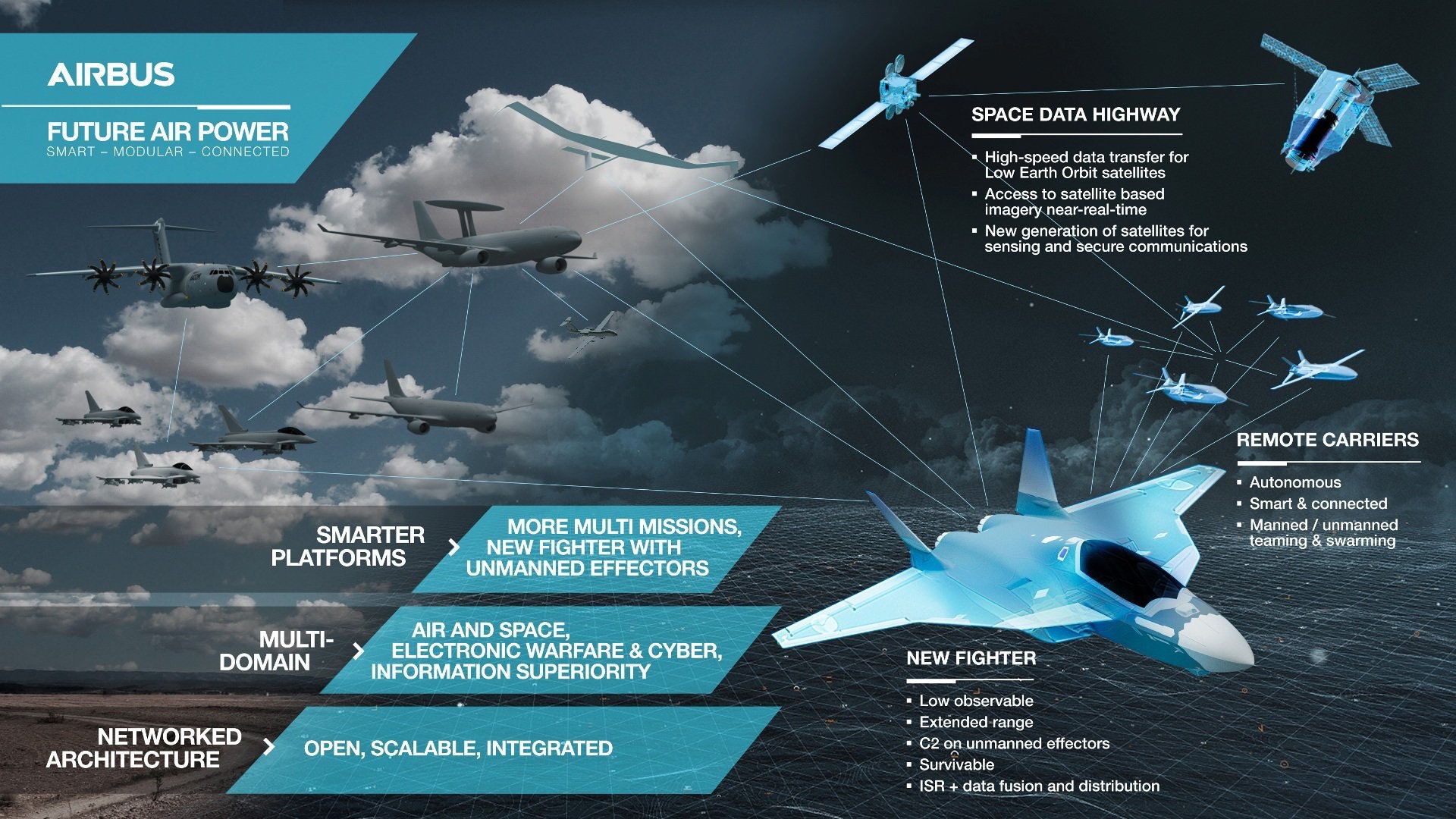
International Projects
The Japanese Air Self-Defence Force (JASDF) is overseeing the development of the Mitsubishi F-X, a sixth-generation stealth fighter due to enter service by the mid-2030s. However, as Japan has not led the development of a new fighter for more than 40 years, it has sought technical support from allies such as the US and the UK. This approach has the aim of levelling up homegrown technical capabilities as collaboration on the fighter jet proceeds.
Mitsubishi Heavy Industries has been selected as the lead on the F-X project, but as many as 1,000 companies from Japan and abroad will make contributions. Lockheed Martin from the US and BAE Systems from the UK are both candidates to partner Mitsubishi.
Turkey’s National Combat Aircraft or MMU (Milli Muharip Uçak) is an indigenous fifth generation fighter developed by prime contractor TUSAŞ/Turkish Aerospace with technological assistance from BAE Systems. Around 250 of these stealthy tactical aircraft are due to be procured between 2029 and 2040. The Turkish Ministry of Defence has had to chart a new course following its ejection from the US-led F-35 Joint Strike Fighter programme as a result of the Countering America’s Adversaries Through Sanctions (CAATSA) imposed by the US after Ankara took delivery of the Russian S-400 air defence missile system. It is now likely that the life of the F-16 will be extended and that the MMU will form the ‘high end’ element of the fighter fleet, augmented by an indigenous ‘loyal wingman’, MIUS.
The Advanced Medium Combat Aircraft (AMCA) programme was launched to develop a twin-engined fighter to replace the Indian Air Force’s main strike fighters – the Mirage 2000 and the SEPECAT Jaguar. The fighter is optimised for low observability and supercruise capability, with the first prototype of AMCA expected to roll out by 2024.
Korea Aerospace Industries’ KF-21 Boramae may look like a fifth generation fighter, but it is not actually intended to be one. The airframe may be stealthier than some fourth-generation fighters, but the aircraft does not carry weapons in internal bays so has limited LO when carrying any operational load. A stealthier version may be developed in future, however. Rolled out in prototype form in April 2021, a first flight is expected next year.
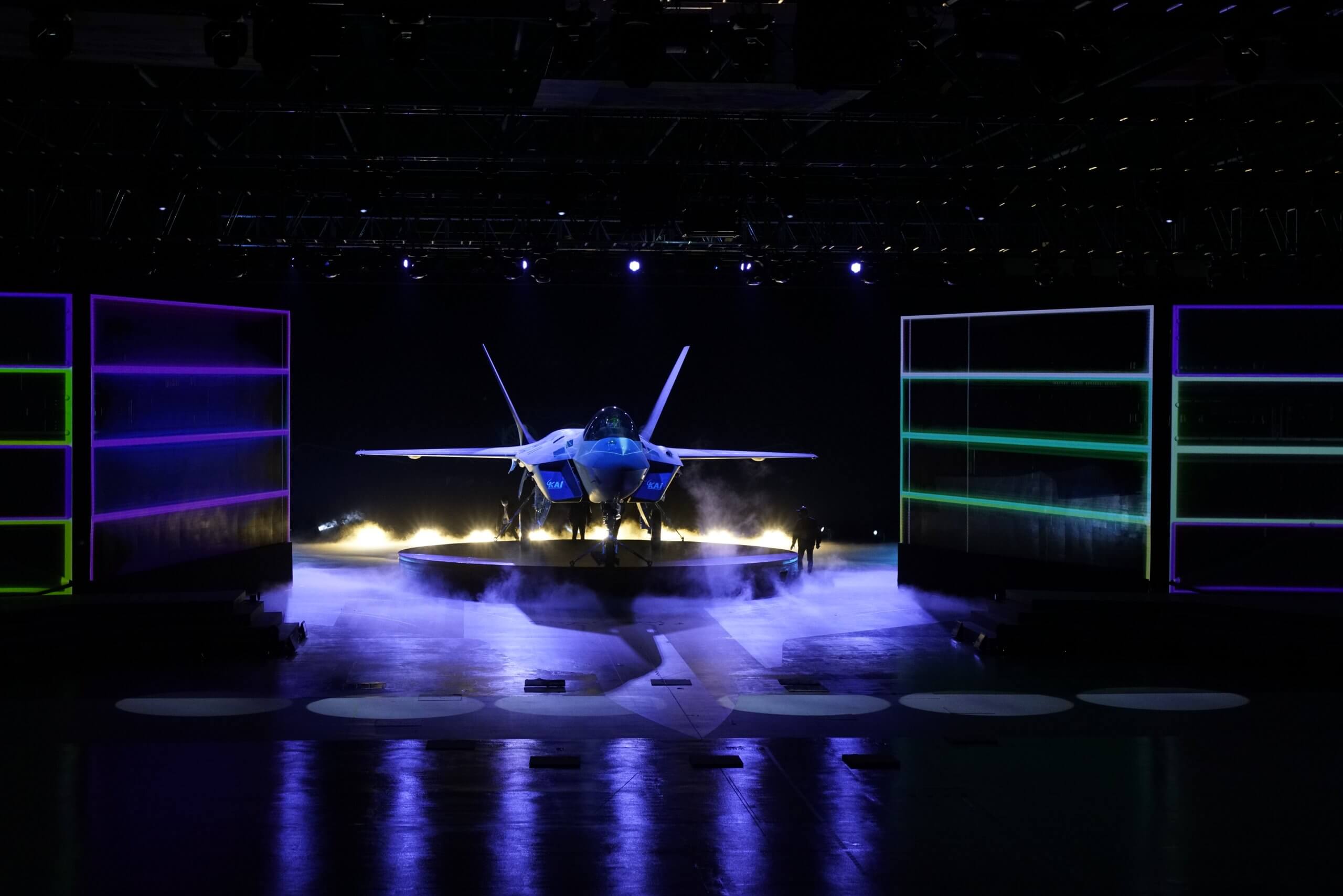
After years of producing licenced (and sometimes unlicenced) copies and derivatives of Soviet fighter designs, China’s aircraft industry began producing indigenous aircraft in the 1990s, with the Xian JH-7 and the Chengdu FC-1 (JF-17) and J-10 – though many believe that the latter was little more than a scaled-up derivative of Israel’s IAI Lavi. Whatever the case, the Chengdu J-20 or ‘Mighty Dragon’, represented the most ambitious Chinese fighter project to date, as a (largely) indigenously designed heavy multi-role fighter with some claim to being a member of the fifth generation, with some degree of LO. First flown on 11 January 2011, the J-20 entered service in March 2017, but doubts remain as to the extent to which the tag ‘stealth’ fighter actually applies.
The Shenyang FC-31 Gyrfalcon is a twin-engined fighter developed as a private venture by the manufacturer, with a configuration similar to that of the F-35 and F-22, including forward-swept intakes with diverterless supersonic inlet (DSI) bumps. This similarity may be the result of effective espionage. The Wall Street Journal reported in April 2009 that Chinese computer spies had penetrated the database of the Joint Strike Fighter programme and had acquired terabytes of secret information.
The type has not yet been selected by the Peoples Liberation Army Air Force (PLAAF), though the prototype flew on 31 October 2012, and an extensively redesigned version flew on 23 December 2016.
Russia has fallen behind in the race to develop new generation fighters, with funding constraints delaying development programmes and favouring more modest efforts to upgrade existing designs.
Sukhoi was selected as the winner of Russia’s PAK-FA competition for a new fighter in 2002, but progress since then has been glacially slow. The Sukhoi T-50 (later Su-57) first flew in prototype form on 29 January 2010, and nine further prototypes and two production aircraft have now flown, though full service entry remains some way in the future. The aircraft does have some LO features, including internal weapons bays, and has a higher level of sensor fusion and connectivity than previous Russian fighters, but can not really be classed as a true fifth-generation fighter. This is one of the many reasons that India withdrew from its planned procurement of the two-seat FGFA derivative. Russia has marketed the type to Algeria, Vietnam, Turkey and even the UAE.
The Sukhoi Checkmate revealed at MAKS in July 2021 (possibly designated as the T-75 by Sukhoi) similarly falls short of true fifth generation status, if indeed it is a serious programme at all. In many respects a single-engined, slightly scaled-down derivative of the Su-57, the new design has some LO characteristics, and its designers are at least talking about the programme producing a ‘system of systems’ that will also include unmanned loyal wingmen.
The status of Russia’s LMFS (Light Multi-Function Tactical Aircraft) programme remains unknown. The aircraft was intended to replace the Mikoyan MiG-29 and MiG-35 in service with the Russian Aerospace Forces and to augment the heavyweight Sukhoi Su-57. Some sources suggest that development may have been abandoned in favour of the new Checkmate.

Russia’s final fifth generation fighter project may be the Mikoyan Izdeliye 41 – developed to meet the PAK-DP (Prospective air complex for long-range interception) requirement to replace the MiG-31. The design of the PAK DP was finalised by the end of 2019, though some reports suggest that the new type will be a derivative of the MiG-31 itself, possibly powered by the Izdeliye 30 engine currently under development for the definitive version of the Su-57. Though such an aircraft could incorporate some LO features, it would be unlikely to be stealthy enough to qualify as a fifth generation fighter.
Though there are a number of advanced fighter programmes now taking shape, none of them will be in service for at least a decade. Until then, the most advanced and most capable fighters in service will be the USAF’s small fleet of F-22s, with the F-35, the Chinese J-20 and upgraded versions of the Eurofighter Typhoon, Boeing F-15 and Dassault Rafale competing to rule the air combat roost.
by Jon Lake












